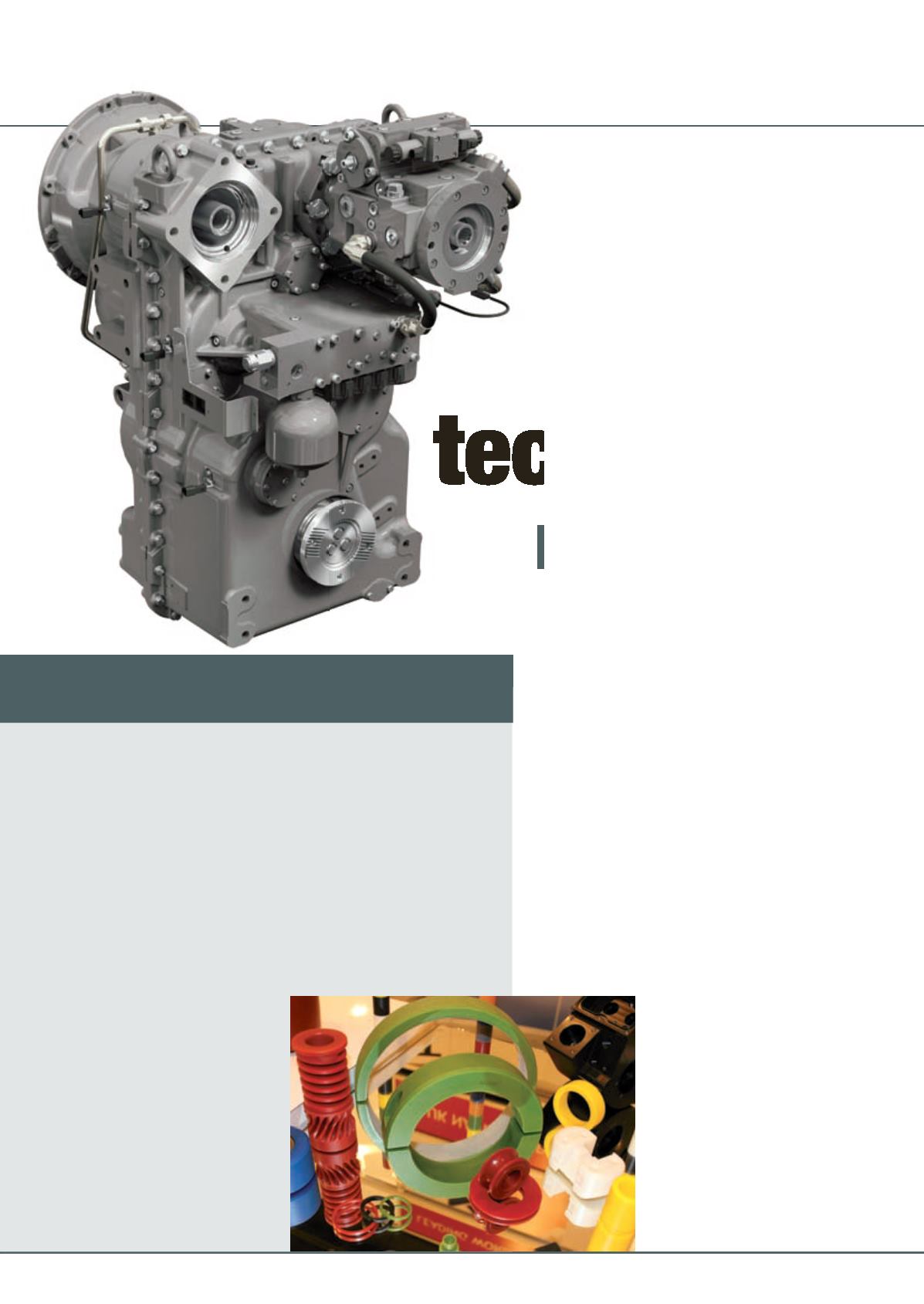
35
december 2013
international
construction
OEM
New technology
>
Designing more efficient construction
machines starts with their component
parts, a sector where there are changes
afoot.
Chris Sleight
reports.
New
technology
I
t would be easy to see the construction equipment industry
as conservative and unsophisticated, with the design of
machines rooted firmly with steel structures, diesel engines
and hydraulic power. But it is an industry that is increasingly
embracing new materials, new technologies and more
sophisticated components, not to mention a more sophisticated
approach to design.
Why? The drivers of greater fuel efficiency, greater productivity
of the finished machines, greater reliability and preferably lower
cost mean manufacturers and their component suppliers have to
look at new approaches to design.
One example of this is the development of hybrid hydro-
mechanical variable transmissions (HVTs), such as the R2
system jointly developed by Dana and Rexroth, and unveiled
at this year’s Bauma exhibition. Combining a hydrostatic drive
(Bosch’s speciality) and mechanical drive (Dana’s forte) into a
single unit means it is possible to reap the advantages of both
technologies. The hydrostatic drive is good at low speeds, where
mechanical systems are inefficient, while the mechanical system
is better at delivering high speeds.
The R2 is designed for loaders, graders, industrial lift
trucks, reach stackers, forestry skidders and other off-highway
applications with a 135 to 195 kW engine. Dana Rexroth said
it achieved fuel savings in the drivetrain of up to -25% when
compared with the same loader fitted with a conventional torque
converter transmission.
Jeroen Decleer, managing director of Dana Rexroth
Transmission Systems, said, “The R2 is
a truly innovative transmission platform
that combines Dana’s and Bosch
Rexroth’s deep knowledge of powertrain.”
Another advantage is that the R2
provides step-less acceleration (i.e. no
gear changes), while physically it is more
or less the same size as a conventional
torque converter.
One way of looking at what devices
like the R2 do, is that they break the link
between engine speed and vehicle speed.
This means the engine can be run at a
steady speed at its most efficient point in
terms of revs, torque, fuel efficiency and
Alternative materials
Nylon has many uses in construction machinery
T
he use of polymers in construction equipment is by no means limited to cosmetic touches
and weight-saving body panels. In fact Leicester, UK-based Nylacast has been supplying
various functional nylon products to industry OEMs for more than 35 years.
One of the classic applications is for wear pads in telescopic booms. The ability to impregnate
nylon with a lubricant – or other additive – has advantages according to construction sales
engineer, Dan Wilson, “Usually we produce something that has a longer life than the traditional
component, so it becomes a fit & forget part that lasts the life of the vehicle,” he said.
There are other advantages besides removing metal-on-metal contact. The nylon is light, so
that translates into more useful load capacity for the boom because the dead weight is reduced.
The lower friction also means there is less fuel consumed in moving the boom in and out.
Another key product is Nylacast’s bushings, which replace older materials like phosphor
bronze. The company says its solution can provide as much as 25 times longer services life.
“Cost can be a challenge if you are up against a cheap casting, but that might be something
that requires a lot of maintenance over the life of the machine. We offer something that has a
better service life and that makes like easier
for OEMs and dealers, because they’re not
always out in the field fixing things,” said Mr
Wilson.
And although the company makes products
for generic applications, it likes to get involved
from the outset with OEMs.
Group CEO Mussa Mahomed said, “We tend
to be involved with the customer from the
design stage, looking at all factors from early
on, so we understand. Clearly there are lots
of polymer manufacturers, but from our point
of view, we are different in that we work in
design and solutions, so we are the first call in
lots of cases.”
The R2 HVT
is its latest
powersplit
system
from the
50:50 joint
venture
between
Dana and
Bosch
Rexroth.


